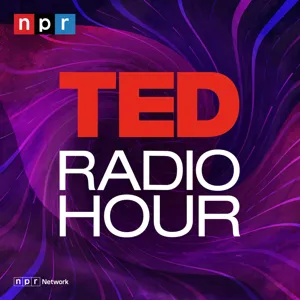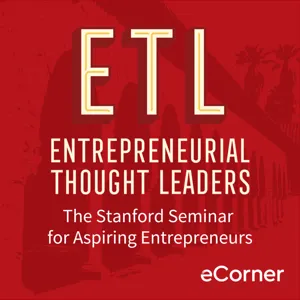Podcast Summary
Exploring originality through sampling in music and innovation: Originality often stems from building upon existing ideas and adding new twists or interpretations
Originality is often a result of building upon existing ideas and creations. This was explored in a Ted Radio Hour episode titled "What is Original?" which delved into the concept of sampling in music, fashion, and innovation. The episode highlighted the song "La Di Di Di" by Dougie Fresh and Slick Rick, released in 1984, which has been sampled hundreds of times due to its iconic beat and distinctive vocal style of Slick Rick. This song's influence can be heard in numerous hits throughout the decades, from the Beastie Boys to Biggie and even Miley Cyrus. The episode emphasized that being inspired by what came before and adding new twists or interpretations is a common thread in the creative process.
Borrowing and building on existing ideas in music: Music creators often borrow from past works and build on them to create something new, reflecting the natural evolution of the art form.
Music, like many other creative fields, often builds on existing ideas and sounds. This process can take many forms, from sampling to paying homage, and the line between these can be blurry. The dawn of the sampling era brought about endless debates on the validity of music containing pre-existing elements, but we now live in the post-sampling era where artists take what they love and build on it to create something new. This was evident in the work of Amy Winehouse and her album "Back to Black," where the producers' love for gospel soul, blues, and jazz was merged with her unique personality and lyrics to create a timeless piece. Ultimately, creativity often involves borrowing and being influenced by what came before, and this is a natural part of the evolution of music and other art forms.
Separating yourself from external influences for originality: To create original work, artists need to balance staying influenced by others and staying true to their unique voice.
To create something original, it's essential for artists to separate themselves from external influences, especially when they're in the process of producing new work. Mark Ronson, a DJ and producer, shared his experience of putting on "blinders" when working on his records to avoid being influenced too much by other artists' music. He emphasized the importance of avoiding listening to popular music that everyone is making a fuss about to ensure that one's unique voice shines through. However, Ronson also acknowledged the importance of borrowing ideas and sampling from various sources, as long as proper credit is given. He mentioned his collaboration with singer MNDR, where they transformed a nursery rhyme into a song. Overall, the process of creating something original involves a balance between being influenced by others and staying true to one's unique voice.
Borrowing and Creating in Music: Musicians often borrow melodies and ideas from past works, but transforming and recontextualizing them is essential to avoid derivativeness and create original compositions. Copyright and patent laws complicate the issue by treating creativity as individual property.
Creation is built on influences and borrowing from the past. Bob Dylan, for instance, borrowed melodies for two-thirds of his early songs. This was common practice in folk music during Dylan's time, where the focus was on contributing to the existing body of music rather than creating entirely original compositions. Similar examples can be found in various genres, like Led Zeppelin's use of another band's melody for their hit song "Stairway to Heaven." However, the line between copying and building on something that came before can be blurry. Transforming and recontextualizing borrowed elements is crucial to avoiding derivativeness and creating something original. Despite this, copyright and patent laws often view creativity as an individual property, which can create tension between the desire to build on the past and the need to protect intellectual property.
Building on the work of others: The iPhone combined existing technologies in a new way, and originality can be complex. Acknowledge sources of inspiration and approach originality with transparency and reflection.
Creativity and innovation often build upon the work of others, and the concept of originality can be complex and nuanced. The iPhone, for example, was not an entirely new invention, but rather a combination of existing technologies that were brought together in a new way. Multi-touch technology, which was a key feature of the iPhone, had been explored before, but it was Apple's implementation and marketing that made it a game-changer. However, the patent system can sometimes create contradictions, as small details are patented while the broader concepts remain open to use by others. It's important to acknowledge the sources of inspiration and to approach the issue of originality with transparency and reflection. The fashion industry provides an interesting example, as designers often borrow and steal from each other, leading to a vibrant and innovative industry. Ultimately, the process of creation is complex and interconnected, and it's important to recognize and respect the contributions of those who came before us.
Fashion's unique intellectual property rules and the blend of past and present: The fashion industry's culture of copying and reviving historical elements fosters trends and originality, despite debates over knockoffs and innovation.
The fashion industry operates under unique intellectual property rules, where designs are considered utilitarian objects rather than works of art, allowing for a culture of copying and inspiration from the past. This culture results in the establishment of trends and the curation of past designs in the present, showcasing a form of originality through the revival of historical elements. While some may argue that this results in cheap knockoffs, it can also reinvigorate interest in respected brands and push designers to innovate. Ultimately, the fashion industry thrives on a blend of inspiration from the past and the present, creating a dynamic and ever-evolving landscape.
The Instinct for Originality and Belonging in Fashion: Encouraging the free flow of ideas can lead to greater innovation and progress, as shown by Elon Musk's decision to give away Tesla's electric vehicle patents and Ben Franklin's philosophy of releasing inventions into the public domain.
The fear of copying or being considered a knockoff is a complex issue, especially in fashion. People want to fit in with trends while also standing out as unique. This instinctive desire for originality and belonging was discussed in a TED Talk by Johanna Blakely. However, history shows that many groundbreaking inventions and ideas have been shared and built upon, leading to greater innovation. Elon Musk's decision to give away Tesla's electric vehicle patents is an example of this philosophy. Ben Franklin, who never patented his inventions, believed in releasing ideas into the world to attract the attention of the ingenious. By fostering an environment where ideas can flow freely, we can accelerate innovation and progress.
The birthplace of innovative ideas is a collaborative network of minds: Innovative ideas often result from a rich tapestry of shared knowledge and collaborative discussions in diverse settings
The birthplace of innovative ideas is not solely an individual's mind, but rather a collaborative network of minds. During the 18th century, figures like Joseph Priestley, Benjamin Franklin, and Thomas Jefferson made groundbreaking discoveries in science and politics not just through their own intellect, but also through engaging in endless conversations with one another. The coffee house played a pivotal role in fostering these collaborations, providing a space where individuals from diverse backgrounds and fields could come together and exchange ideas. Contrary to the popular notion of ideas as entirely new and original, they are often a combination of existing knowledge and new perspectives. So, the next time you have an "aha!" moment, remember that it may be the result of a rich tapestry of shared ideas and collaborative discussions.
The Long Incubation Period of Creative Ideas: Creative ideas often form over a long period of time through experimentation, calculation, and incubation, leading to significant discoveries and advancements.
Many creative and innovative ideas do not come about in a single Eureka moment, but rather are the result of a long incubation period. This was exemplified in the story of the two scientists, Geyer and Wifenbach, who discovered the concept for GPS after being intrigued by the signal from Sputnik. Their breakthrough came after hours of experimentation and weeks of calculation using a new computer. This slow hunch formation, which can take months, years, or even decades, is often the most important part of the creative process. The idea for GPS was born out of this long incubation period and led to a groundbreaking technological advancement.
The creation of GPS involved solving complex problems over thousands of years: From gravity and space to rockets and timekeeping, GPS required deep understanding and innovation from various fields. Recognizing the value of remixing and combining ideas is essential for creating something new, like Apple's retail stores.
Many seemingly simple and ubiquitous technologies, like GPS, require a vast amount of knowledge and innovation from various fields to become a reality. From understanding the fundamentals of gravity and space to building rockets and developing timekeeping technology, the creation of GPS involved solving complex problems over thousands of years. Furthermore, the idea of originality versus copying is a complex one. While education and learning involve copying, it's essential to recognize the value of remixing and combining existing ideas to create something new. Apple's approach to creating their retail stores is a great example of this, as they looked to high-end hotels for inspiration and created the Genius Bar to provide a concierge-like experience for customers. Ultimately, the ability to recognize the depth of innovation behind seemingly simple technologies and the value of remixing existing ideas is crucial for understanding the world around us.
Borrowing and repurposing ideas from different contexts: Effective creativity involves rethinking and adapting old ideas to new situations, as seen in Apple's Genius Bar and Ritz Carlton's concierge service.
Creativity often stems from borrowing and repurposing ideas from different contexts. The Genius Bar at Apple Stores, for instance, was inspired by the Ritz Carlton hotel's concierge service. While it may seem derivative, the key lies in how these ideas are reimagined in new contexts. This concept is explored in Stephen Johnson's book "Where Good Ideas Come From." Apple's success in implementing this concept is evident in the popularity of the Genius Bar and the Apple Store's status as the most profitable retail environment per square foot. The most effective forms of creativity, therefore, involve rethinking and adapting old ideas to new situations. This approach can be seen in various industries and fields, from hospitality to technology.






